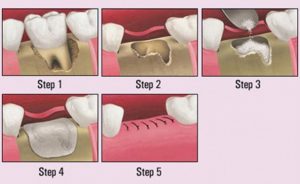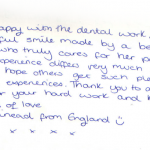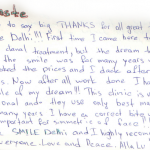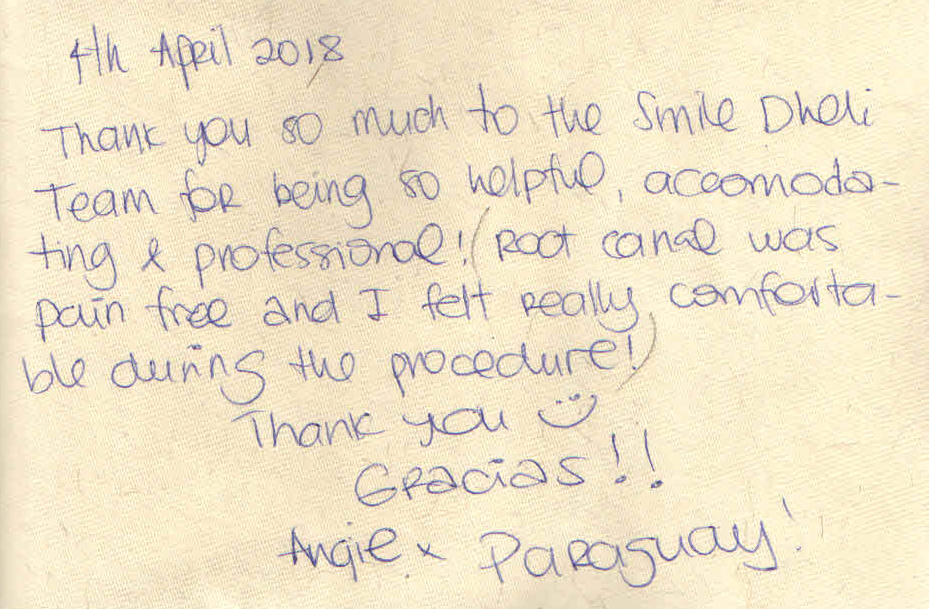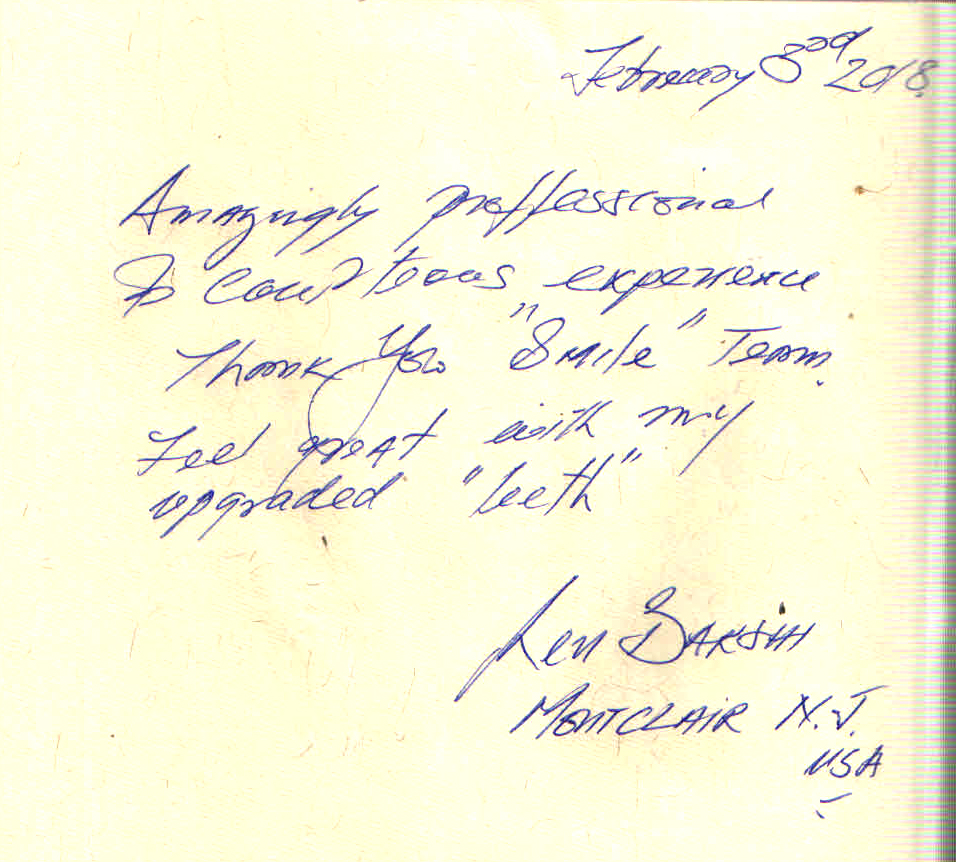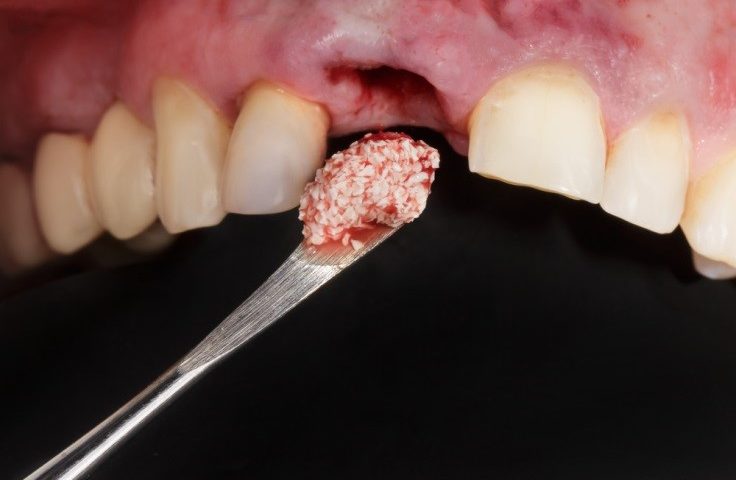
Bone Grafts in Dentistry
Do you think of bone as a hard, rigid material that never changes? The fact is that the bone remodels itself all the time: Your body is constantly depositing new bone cells and removing old ones. For example, the jawbone’s adaptability allows an orthodontist/braces specialist, to move teeth into a better position with braces. But in the case of losing a tooth as an adult, the bone changes that result can have serious consequences.
When teeth are lost, the bone that surrounds them begins to “resorb.” Tooth-supporting bone can also be lost when you have periodontal (gum) disease. If you lose enough teeth and bone, your facial features will sag, giving you a more aged appearance; it can also complicate treatment to replace your missing teeth. Fortunately, with modern bone grafting-techniques, the bone that has been lost can be built up again. This can benefit both your health and appearance by strengthening your jawbone, allowing more effective tooth replacement, and increasing support to your facial features.
Bone grafting is a minor surgical procedure that is normally done in a dental office. An incision is made in your gum to gain access to the bone beneath it, and then grafting material is added. Most often, the grafting material is processed bone minerals, around which your body will actually deposit new bone cells.
The grafting material itself can come from your own body, but very often it is bone from an animal or human donor that has been treated by a laboratory to make it sterile and safe. It can even be a synthetic substance. Grafting material comes in a variety of forms: powder, granules, putty or a gel that can be injected through a syringe. The graft, which is generally covered by a collagen membrane for optimum bone repair, will act as a scaffold onto which your body will build new bone.
Uses for Bone Grafts
Bone grafts are used in dentistry to accomplish the following treatment goals:
Saving Teeth — When severe periodontal disease causes bone loss, teeth can become loose and are at risk of being lost. In order to save them, the bone around them can be regenerated through grafting; this increases bone support and helps keep them in place.
Tooth Extractions — These days, it is very common to deposit bone grafting material into a tooth socket after a tooth has been removed. That way, when you want to replace your tooth with a dental implant later on, the option of placing the implant will be available.
Dental Implants — In this optimal tooth-replacement system, a small titanium implant embedded in the jawbone is attached to a highly realistic dental crown, permanently replacing the missing tooth. Implants require good bone volume and density to achieve their excellent functionality and high success rates. The best implantologists in India also suggest that if you have already experienced bone loss, a graft can help regenerate enough bone to place the implant successfully.
Bone grafting is a surgical procedure that replaces missing bone in order to repair bone fractures that are extremely complex, pose a significant health risk to the patient, or fail to heal properly. Some kind of small or acute fractures can be cured but the risk is greater for large fractures like compound fractures.
Bone grafts are used as a filler and scaffold to facilitate bone formation and promote wound healing. These grafts are bioresorbable and have no antigen-antibody reaction. These bone grafts act as a mineral reservoir which induces new bone formation.
Bone Graft Classification by Material Source
Bone substitute materials (BSM) were developed to counteract the difficulties of autogenous grafts (where the bone is obtained from another part of the same body of the patient). They can either replace autogenous bone entirely or expand the autogenous graft. Materials need to be effective for procedures both before insertion of the implants (time-delayed procedures) and for optimization of the recipient site at the time of implant placement (simultaneous procedures).
Common options for bone grafting include:
- Xenograft Tissue: Xenograft is bone taken from an animal source and transplanted into your body.
- Alloplast Bone Graft: Alloplast is synthetically made material to be used in your body as a bone graft alternative.
- Autograft Tissue: Autograft is bone taken surgically from one part of your body and transplanted to another part.
- Allograft Tissue: Allograft tissue is generously donated by the family of a deceased loved one to enhance the life of another individual.
Dentists in South Delhi are routinely doing bone grafting in their day to day practice.
Almost 70 percent of the patients who come to dental clinics in Delhi, for their implant treatment do not have sufficient bone support. However the availability of high-quality bone graft materials that are available along with the adept expertise in reputed dental clinics in Delhi, like “Smile Delhi – The Dental Clinic”, make implant treatment possible for patients with compromised bone support.
Not only is the treatment possible, the prognosis is good for years to come. So patients with compromised bone can look forward to a beautiful healthy smile which can improve the quality of their eating and health, for many years to come.


